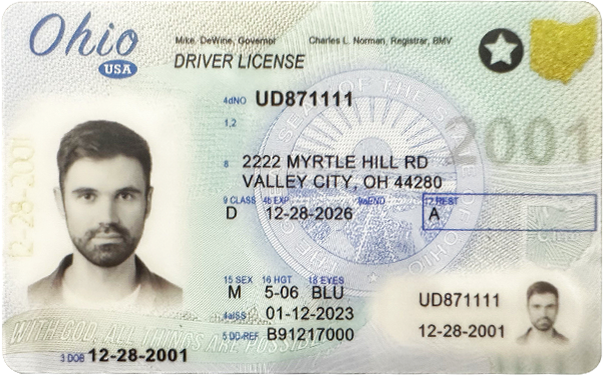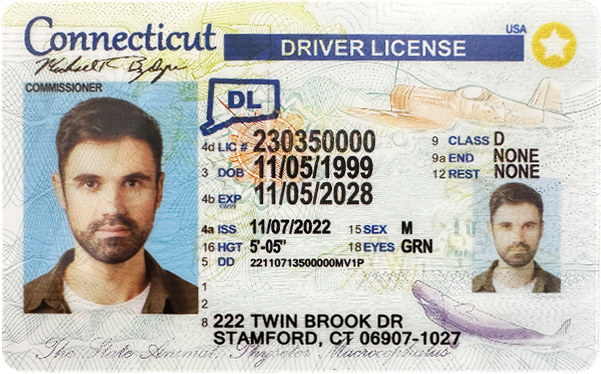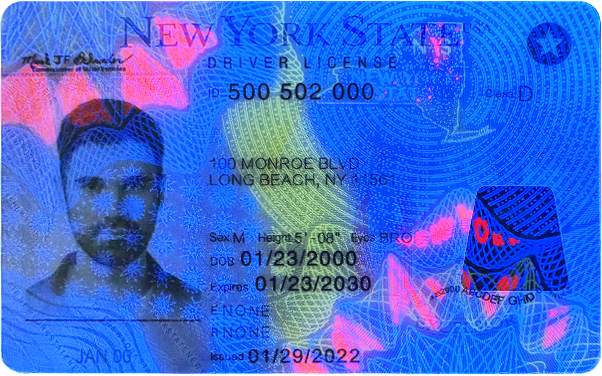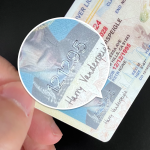Public transportation systems play a crucial role in the daily lives of countless people around the world. Ensuring the safety and reliability of these systems is of utmost importance, and one aspect of this is verifying the authenticity of driver’s licenses for public – transportation operators. Here’s a detailed look at how public transportation authorities check for fake driver’s licenses.
Visual Inspection
The first line of defense for public transportation authorities is a visual inspection of the driver’s license. Trained personnel are familiar with the key features of a legitimate driver’s license for their jurisdiction. For example, they look at the overall design and layout of the license. Legitimate licenses have specific color schemes, font styles, and graphic elements that are unique to each issuing state or country. They will check for watermarks, which are often visible when the license is held up to the light. These watermarks can be in the form of the state seal, a logo, or other identifying images.

Another important visual aspect is the holographic overlays or images on the license. Holograms are difficult to replicate accurately, and they add an extra layer of security. Public – transportation authorities look for the proper placement and quality of these holograms. If the hologram appears blurry, misaligned, or has a different color or texture than expected, it could be a sign of a fake license.
They also examine the microprinting on the license. Microprinting is text that is so small it requires magnification to read properly. Legitimate licenses often have microprinting that contains important information such as the license number or the state name. If the microprinting is missing, difficult to read even with magnification, or does not match the expected content, it may indicate a counterfeit license.
Verification of Information
Once a visual inspection has been carried out, public transportation authorities may verify the information on the license. They cross – reference the details on the license, such as the name, date of birth, and address, with the information in their own databases or with the databases of the issuing authority. This can be done through electronic means, such as accessing a secure online system that allows them to check the validity of the license. For example, if a driver presents a license from a particular state, the authority can use a web – based interface provided by that state’s Department of Motor Vehicles (DMV) to confirm that the license number is associated with the correct individual and has not been reported as lost, stolen, or revoked.

They may also check for any discrepancies in the information. For instance, if the age of the driver calculated from the date of birth on the license does not match the physical appearance of the driver, it could be a red flag. In some cases, the address on the license may be inconsistent with other records the authority has for the driver, which could also prompt further investigation.
Use of Technology
Public transportation authorities are increasingly relying on technology to detect fake driver’s licenses. One such technology is license – reading devices. These are handheld or stationary devices that can scan the magnetic stripe or the bar code on the driver’s license. The device then reads the encoded information and compares it with the information displayed on the license. If there are any discrepancies between the two, it could be a sign of a fake license. For example, if the magnetic stripe contains different data than what is printed on the license, it is likely that the license is not genuine.
Some authorities also use biometric technology for license verification. Biometrics, such as fingerprint or facial recognition, can be used to match the driver to the information on the license. When a driver presents their license, they may be required to provide a fingerprint or have their face scanned. The biometric data is then compared to the data that was originally captured when the license was issued. If there is no match, it indicates that there may be an issue with the license. Facial recognition technology, in particular, has advanced significantly in recent years, and it can accurately detect differences between the photo on the license and the driver’s actual appearance.

Training and Education
To effectively check for fake driver’s licenses, public transportation authorities invest in training and education for their staff. Employees who are responsible for license verification are trained to recognize the various security features of legitimate licenses, as well as the common signs of counterfeiting. They are taught how to use the technology available for license verification, such as license – reading devices and biometric scanners. Training also includes how to handle situations where a fake license is suspected. Employees are educated on the proper procedures for further investigation and reporting.
Regular updates are provided to staff to keep them informed about new types of fake licenses and the latest counterfeiting techniques. This ensures that they are always prepared to detect and deal with potential fraud. For example, as counterfeiters become more sophisticated, new security features are added to driver’s licenses. Staff need to be aware of these changes so that they can properly verify the authenticity of licenses.
Collaboration with Law Enforcement and Other Agencies
Public transportation authorities often collaborate with law enforcement agencies and other relevant organizations to combat fake driver’s licenses. They share information about trends in counterfeiting, such as the types of licenses that are being targeted by counterfeiters and the methods used to produce fake licenses. Law enforcement agencies can provide valuable insights and resources in the fight against license fraud. For example, they may be involved in investigations that lead to the discovery of counterfeiting operations, and they can share this information with public transportation authorities.
Some public transportation authorities also work with the DMVs of different states or countries. This collaboration allows for more efficient verification of licenses, especially those from out – of – state or foreign jurisdictions. By sharing databases and verification procedures, they can more accurately determine the authenticity of a license, even if it was issued in a different location.
Common Problems and Solutions
- Problem: Difficulty in Visual Inspection
Sometimes, the security features of a license may be difficult to discern, especially if the license is old or has been damaged. Counterfeiters may also produce licenses with seemingly convincing visual features.
Solution: Public transportation authorities should provide their staff with high – quality magnification tools, such as magnifying glasses or microscopes, to better examine microprinting and other small details. Additionally, continuous training on the latest counterfeiting techniques and the most up – to – date security features of licenses can help staff make more accurate visual assessments.
- Problem: Inaccurate Database Information
There may be errors or outdated information in the databases used for license verification. This can lead to false positives or false negatives when checking for fake licenses.
Solution: Authorities should regularly update and maintain their databases to ensure the accuracy of the information. They should also establish procedures for cross – checking information with multiple sources when necessary. For example, if there is a discrepancy in the database information, they can contact the issuing DMV directly to verify the details.
- Problem: Malfunctioning Technology
License – reading devices and biometric scanners may experience technical glitches, such as software failures or hardware malfunctions. This can disrupt the license verification process.
Solution: Regular maintenance and calibration of the technology should be carried out. Staff should be trained on basic troubleshooting procedures so that they can quickly address minor technical issues. Additionally, authorities should have backup systems or alternative verification methods in place in case of technology failures.
- Problem: Resistance from Drivers
Some drivers may be resistant to providing biometric data or may become confrontational when their license is suspected of being fake. This can create a difficult situation for public transportation authorities.
Solution: Staff should be trained in customer service and conflict – resolution techniques. They should be able to explain the license verification process and the importance of it to the drivers in a calm and professional manner. Clear policies should be in place regarding how to handle such situations, and in extreme cases, law enforcement can be called in for assistance.
- Problem: Lack of Collaboration
If there is a lack of collaboration between public transportation authorities, law enforcement, and other agencies, it can be more difficult to detect and combat fake driver’s licenses.
Solution: Establishing formal partnerships and communication channels between these entities is essential. Regular meetings and information – sharing sessions can be organized to ensure that everyone is on the same page. Memorandums of understanding can also be put in place to clearly define the roles and responsibilities of each party in the fight against license fraud.
Fake ID Pricing
unit price: $109
| Order Quantity | Price Per Card |
|---|---|
| 2-3 | $89 |
| 4-9 | $69 |
| 10+ | $66 |



